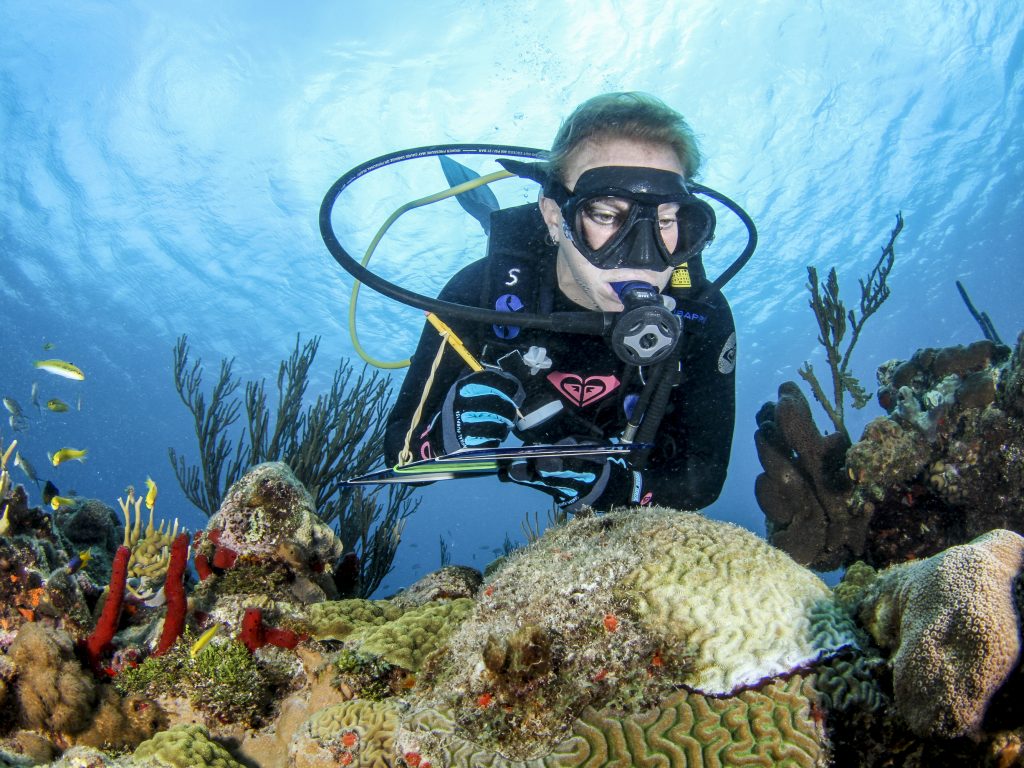Coral Disease Outbreaks
Coral disease is a naturally occurring process on reefs, but certain factors can exacerbate disease and cause outbreaks. Coral disease outbreaks can lead to an overall reduction in live coral cover and reduced colony density. In extreme cases, disease outbreaks can initiate community phase-shifts from coral- to algal-dominated communities. Coral diseases can also result in a restructuring of coral populations.
Disease involves an interaction between the coral host, a pathogen, and the reef environment. Scientists are learning more about the causes of coral disease, especially in terms of identifying the pathogens involved. To date, the most infectious coral diseases are caused by bacteria. Transmission of coral diseases can be facilitated in areas of high coral cover ref as well as through coral predation, as predators can act as vectors by oral or fecal transmission of pathogens. ref
The causes of coral disease outbreaks are complex and not well understood, although research suggests that important drivers of coral disease include climate warming, land-based pollution, sedimentation, overfishing, and physical damage from recreational activities, and release of ballast water. ref

Surveying diseased coral in St. Croix, U.S. Virgin Islands. Photo © John Melendez
Management Strategies
A coral disease response plan describes the steps for detecting, assessing, and responding to an outbreak. Because disease spread is dependent on transmission, managers may focus on intervention of disease transfer or creating barriers to the infection by treating corals. Disease can spread rapidly through a coral reef ecosystem, but disease outbreaks can also persist for months to years. This means that monitoring disease response may need to be sustained for many months or even years.
Like bleaching response plans, type and scale of the plan might vary greatly depending on your site and capacity. Recognizing and identifying coral diseases is critical for an effective disease response, and in many locations coral reef managers may need to rely on special expertise or may want to implement a program to build capacity in this area. Fortunately, there are some excellent guides and tools (e.g., Raymundo et al. 2008) to assist in the identification and management of coral disease.

Pocillopora colony affected by skeletal eroding band disease following predation by Drupella snails. Photo © Hannes Klostermann/Ocean Image Bank
